The Broad-billed Hummingbird (Cynanthus latirostris) is a captivating avian species that graces the skies of North America with its vibrant plumage and distinctive features.
Renowned for its strikingly colored plumage and remarkable bill structure, this small hummingbird species belongs to the Trochilidae family.
Sporting iridescent green and blue feathers, the male Broad-billed Hummingbird boasts a remarkable cobalt-blue throat that adds to its allure.
Meanwhile, the female exhibits a more understated yet elegant appearance with green upperparts and a whitish throat.
True to its name, the Broad-billed Hummingbird possesses a noticeably wide and straight bill, setting it apart from other hummingbird species.
These agile fliers are adept at hovering and extracting nectar from a variety of flowers, playing a crucial role in pollination.
As a symbol of beauty and grace, the Broad-billed Hummingbird remains an enchanting and iconic resident of North America’s diverse ecosystems.
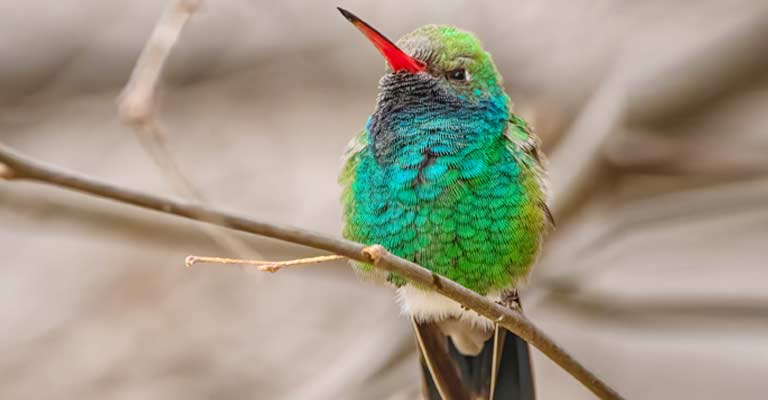
Identifying Characteristics of Broad-billed Hummingbird
The Broad-billed Hummingbird (Cynanthus latirostris) possesses distinctive characteristics that make it easily recognizable among its avian counterparts.
Observing these key features is crucial for accurately identifying this charming hummingbird species.
Distinctive Bill Shape
The most noticeable characteristic of the Broad-billed Hummingbird is its namesake bill. Unlike other hummingbirds, the bill of C. latirostris is notably broad and straight.
This unique feature sets it apart immediately, making it a primary identifier in the field.
Vibrant Plumage of the Male
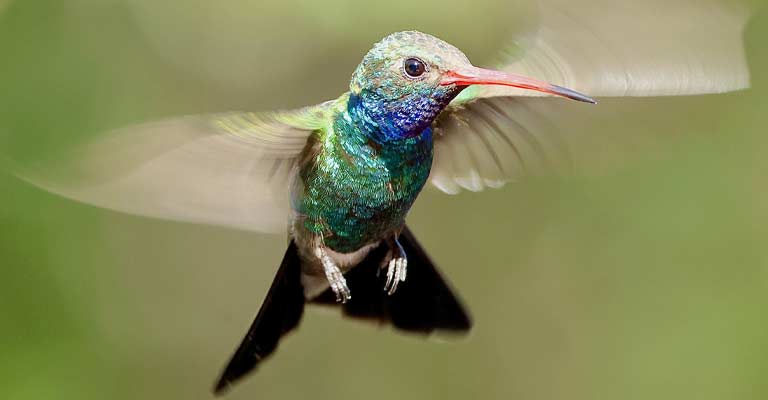
Male Broad-billed Hummingbirds exhibit an eye-catching array of colors. Their iridescent green and blue feathers create a dazzling effect, capturing the sunlight and reflecting an ever-changing spectrum.
The most striking feature is the cobalt-blue throat, adding a vivid splash of color to their appearance.
Subdued Elegance of the Female
While not as flamboyantly colored as their male counterparts, female Broad-billed Hummingbirds possess an understated elegance.
Their green upperparts and whitish throat distinguish them, maintaining a level of sophistication in their appearance.
Colorful Gorget
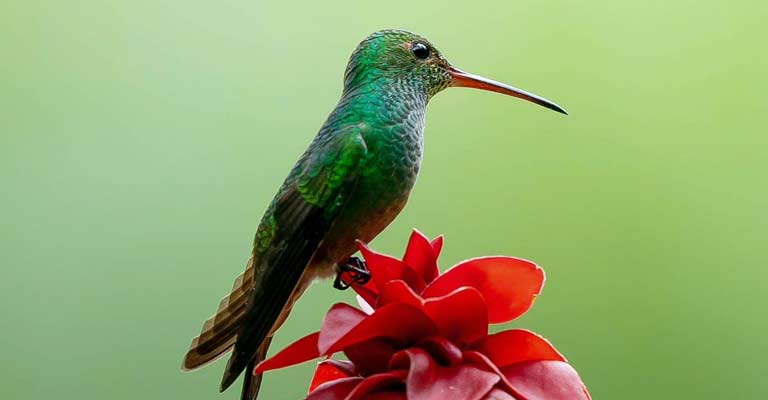
Both males and females have a colorful patch of feathers on their throats, known as the gorget. In males, this area is particularly vibrant, while females display a more subtle but equally attractive coloration.
Size and Shape
The Broad-billed Hummingbird is a small species with a compact body. Its wings are relatively short and rounded, contributing to its agile and rapid flight.
These physical attributes aid in distinguishing it from larger or differently shaped hummingbird species.
Distinctive Vocalizations
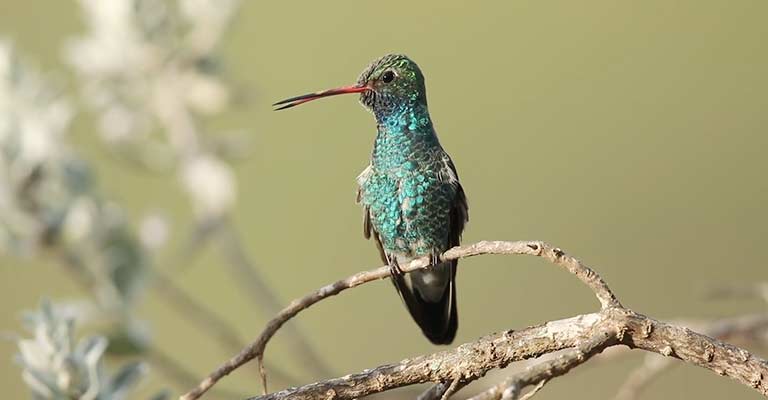
While visual cues are essential, auditory identification is equally important. The Broad-billed Hummingbird produces distinctive vocalizations, including high-pitched chirps and buzzing sounds.
Familiarizing oneself with these unique calls can be instrumental in accurate identification.
Hovering Behavior
One of the most remarkable behaviors of the Broad-billed Hummingbird is its ability to hover in mid-air, thanks to its rapid wing beats.
This distinctive hovering behavior, often accompanied by agile movements, is a characteristic feature that aids in identification.
A combination of visual and auditory cues, along with an understanding of the Broad-billed Hummingbird’s preferred habitat and behaviors, provides a comprehensive approach to accurate identification.
Whether admiring its broad bill, vibrant plumage, or enchanting aerial acrobatics, recognizing these key characteristics enhances the appreciation of this remarkable hummingbird species.
Taxonomy of Broad-billed Hummingbird
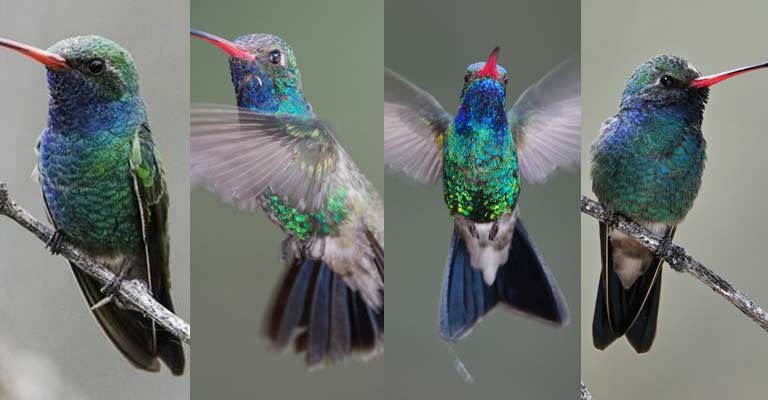
Here’s a table outlining the taxonomy details of the Broad-billed Hummingbird (Cynanthus latirostris):
| Taxonomic Level | Classification |
| Domain | Eukaryota |
| Kingdom | Animalia |
| Phylum | Chordata |
| Class | Aves |
| Clade | Strisores |
| Order | Apodiformes |
| Family | Trochilidae |
| Genus | Cynanthus |
| Species | C. latirostris |
The Broad-billed Hummingbird (Cynanthus latirostris) belongs to the Animalia kingdom, Chordata phylum, and Aves class. It is part of the Strisores clade and the Apodiformes order, known for swift and agile aerial species.
Classified in the Trochilidae family, this hummingbird is further identified under the Cynanthus genus. Its distinct species name is latirostris, denoting its unique broad bill.
This comprehensive taxonomy highlights its position in the evolutionary hierarchy, providing a concise overview of the Broad-billed Hummingbird’s classification within the broader spectrum of living organisms.
Broad-billed Hummingbird Life History
The life history of the Broad-billed Hummingbird (Cynanthus latirostris) unveils a fascinating journey of survival and adaptation.
From its dietary preferences to nesting habits, breeding behaviors, and conservation status, each aspect paints a vivid picture of this enchanting avian species.
Food
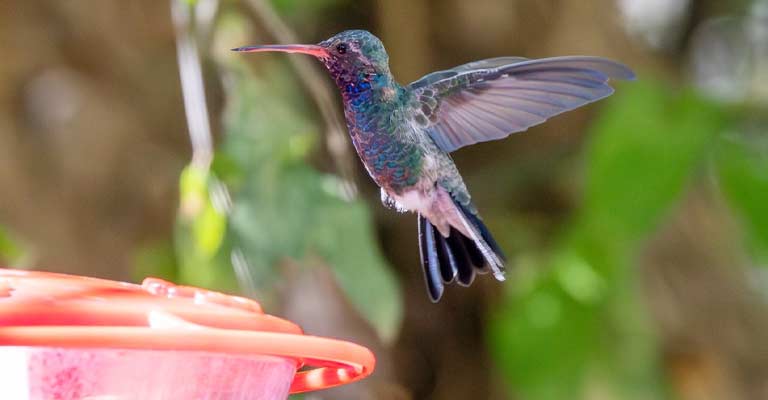
The Broad-billed Hummingbird sustains itself primarily on a nectar-rich diet, sourced from a diverse array of flowers.
Their specialized bills facilitate efficient extraction of nectar, while also consuming small insects and spiders to supplement their nutritional needs.
Habitat
Thriving in arid and semi-arid environments, these hummingbirds inhabit open woodlands, desert scrub, and gardens. Their adaptable nature allows them to navigate diverse landscapes, from lowland regions to mountainous terrain.
Range Map
The Broad-billed Hummingbird’s range spans across western North America, including parts of the United States and Mexico.
A detailed range map illustrates their distribution, showcasing the areas where these birds can be encountered in the wild.
Nesting
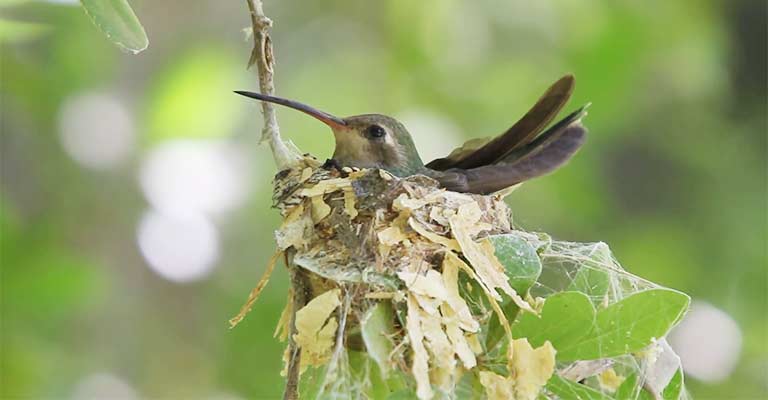
These birds construct delicate cup-shaped nests using plant fibers, down, and spider silk, often secured on a horizontal branch. The nests are strategically camouflaged, providing a safe haven for their eggs and chicks.
Here’s a table summarizing the nesting details of the Broad-billed Hummingbird (Cynanthus latirostris):
| Nesting Details | Facts |
| Clutch Size | Usually 2 eggs |
| Number of Broods | Typically 1, occasionally 2 |
| Egg Length | Approximately 1.3 cm (0.5 inches) |
| Egg Width | Around 0.8 cm (0.3 inches) |
| Incubation Period | Approximately 14-19 days |
| Nestling Period | About 18-21 days |
| Egg Description | Tiny, white or creamy, often with subtle markings |
| Nest Type | Compact cup-shaped nest made of plant fibers, down, and spider silk, camouflaged on a horizontal branch |
| Nest Location | In trees, shrubs, or occasionally on human-made structures |
| Parental Care | Female responsible for incubation and care of offspring |
| Courtship Display | Elaborate aerial displays by males during breeding season |
| Nesting Site Selection | Typically in areas with abundant nectar and suitable foraging opportunities |
Breeding
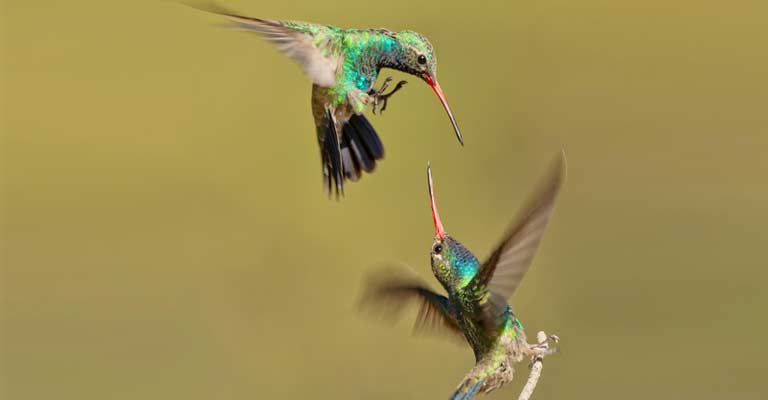
Breeding season typically coincides with the availability of abundant nectar and insects. Males engage in elaborate courtship displays, showcasing their vibrant plumage and aerial acrobatics to attract potential mates.
The female, once impressed, assumes sole responsibility for incubating and caring for the offspring.
Diseases
Like many bird species, Broad-billed Hummingbirds can be susceptible to diseases.
Common avian health concerns include fungal infections, mites, and parasites. Vigilant monitoring of their well-being is crucial for maintaining a healthy population.
Treatment
Prompt veterinary intervention is vital when diseases afflict these hummingbirds. Treatment may involve anti-fungal medications, anti-parasitic treatments, and supportive care to address nutritional deficiencies.
Conservation efforts extend to ensuring the overall health of individual birds within the population.
Conservation
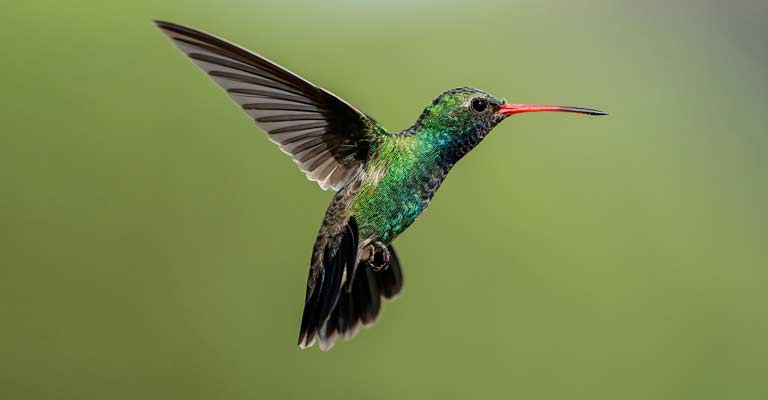
While the Broad-billed Hummingbird is currently listed as a species of least concern, ongoing habitat loss and climate change pose potential threats.
Conservation initiatives focus on preserving their natural habitats, establishing protected areas, and raising awareness about the importance of these birds in maintaining ecological balance.
In essence, the life history of the Broad-billed Hummingbird reflects a delicate balance between adaptation and environmental challenges, showcasing the resilience of this remarkable species in the intricate tapestry of the natural world.
10 Fun Facts About Broad-billed Hummingbird
The Broad-billed Hummingbird (Cynanthus latirostris) is a captivating species known for its vibrant colors, aerial acrobatics, and intriguing behaviors. Here are 10 fun facts about these enchanting hummingbirds:
- Vivid Plumage: The male Broad-billed Hummingbird boasts dazzling, iridescent green and blue feathers. The standout feature is the vibrant cobalt-blue throat, creating a mesmerizing display during flight.
- Elegant Females: While not as flamboyant as males, female Broad-billed Hummingbirds exhibit an understated elegance with green upperparts and a whitish throat.
- Specialized Bill: True to its name, this hummingbird has a distinctively broad and straight bill. The specialized shape aids in efficient nectar extraction from flowers.
- Aerial Acrobats: Broad-billed Hummingbirds are agile fliers, capable of hovering in mid-air and performing intricate aerial maneuvers. Their rapid wing beats allow them to navigate with precision.
- Tiny Eggs: The eggs laid by these hummingbirds are tiny, measuring approximately 1.3 cm (0.5 inches) in length. Despite their small size, they play a crucial role in the species’ reproduction.
- Cup-shaped Nests: Female Broad-billed Hummingbirds construct cup-shaped nests using plant fibers, down, and spider silk. The nests are delicately camouflaged on horizontal branches for added protection.
- Courtship Rituals: During the breeding season, males engage in elaborate courtship displays, showcasing their vibrant plumage and performing aerial acrobatics to attract potential mates.
- Nesting Sites: These hummingbirds often choose nesting sites in trees, shrubs, or even on human-made structures. The selection is strategic, considering factors like nectar availability and foraging opportunities.
- Intense Incubation: The female is solely responsible for incubating the eggs, a process that takes approximately 14-19 days. This dedicated parental care ensures the survival of the offspring.
- Migratory Behavior: While some populations are year-round residents in their habitats, others undertake seasonal migrations. These migrations are often influenced by the availability of nectar-producing flowers.
The Broad-billed Hummingbird’s fascinating traits and behaviors make it a delightful subject of study and observation, captivating bird enthusiasts and nature lovers alike with its unique characteristics and vibrant presence in the diverse ecosystems it inhabits.
Wrapping Up
The Broad-billed Hummingbird emerges as a jewel of the avian world, marked by its vibrant plumage, specialized bill, and captivating behaviors.
From their agile aerial displays to meticulous nesting habits, these hummingbirds exemplify nature’s intricate balance.
Their presence, both in terms of ecological significance and aesthetic beauty, underscores the importance of conservation efforts to preserve their habitats.
As these enchanting birds navigate the skies, their life history, nesting details, and unique characteristics weave a story of resilience and adaptation in the face of environmental challenges.
Observing the Broad-billed Hummingbird in its natural habitat offers not only a glimpse into the marvels of avian evolution but also an appreciation for the delicate ecosystems they inhabit.